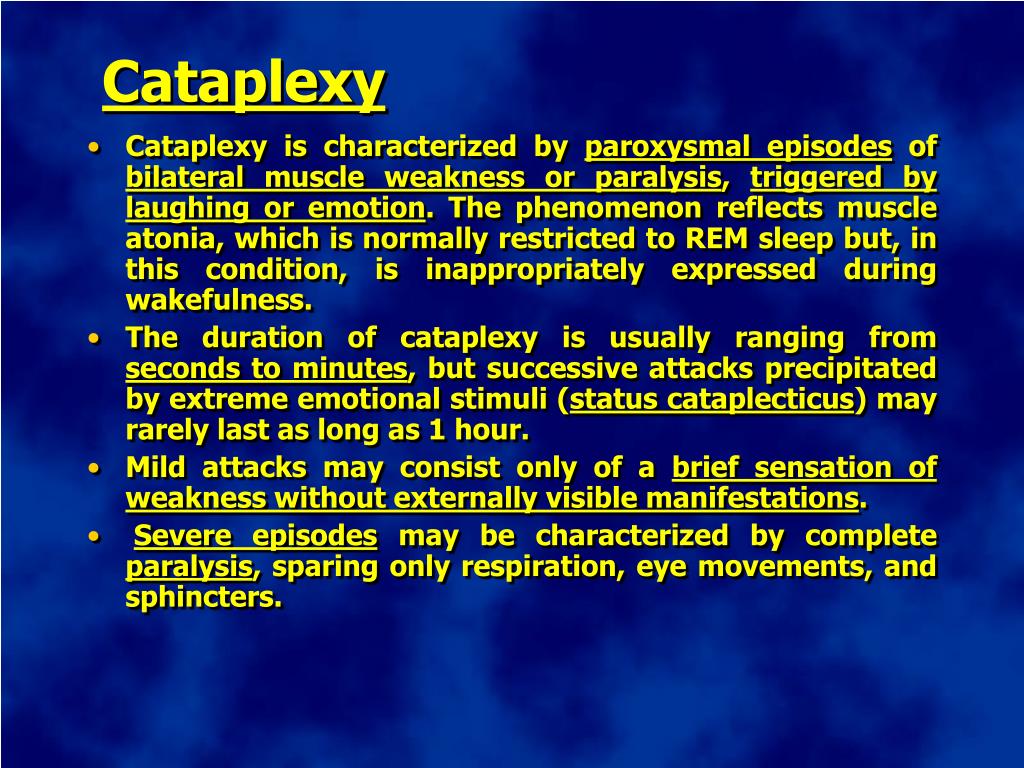
long-term management of bipolar disorder.acute treatment of agitation in schizophrenia and bipolar disorder.acute treatment of manic or mixed episodes of bipolar I disorder.Some common side effects of aripiprazole and aripiprazole lauroxil may include:Īpart from schizophrenia, aripiprazole is approved by the Food and Drug Administration (FDA) for the following conditions:
#Atypical cataplexy professional#
an injectable form given by a healthcare professional.a tablet that contains a sensor (to notify if you’ve taken the drug).Aristada is available only as an injectable form given by a healthcare professional.Ībilify is available in the following forms: When you take Aristada, your body turns aripiprazole lauroxil into aripiprazole. It’s believed that this is because atypical antipsychotics also block a serotonin receptor (5HT2a), which helps create a better balance of dopamine in the brain.Ītypicals may also be slightly better when it comes to negative symptoms, but evidence is mixed in this area.ĭespite these benefits, atypical antipsychotics are more likely to cause weight gain and metabolic problems, such as diabetes.īut overall, their risk for severe side effects, such as EPS, is much lower than that of the previous generation.Īripiprazole / aripiprazole lauroxil (Abilify / Aristada)Īripiprazole ( Abilify) and aripiprazole lauroxil ( Aristada) are atypical antipsychotics commonly used for adults with schizophrenia.Īripiprazole lauroxil is a “prodrug” of aripiprazole, so a slightly different compound.

This newer class of antipsychotics seems to reduce just enough dopamine to treat the positive symptoms of schizophrenia but not enough to cause a high risk for EPS. These issues led researchers to search for a better antipsychotic, which ultimately led to the emergence of atypical antipsychotics, the first of these being clozapine.

dystonia (involuntary movements like muscle contractions and spasm that can affect different parts of the body, including the eyes, neck, or legs).

In addition, these drugs can reduce dopamine so much that it causes an imbalance in the brain leading to serious movement and coordination problems known as extrapyramidal symptoms (EPS). Typical antipsychotics are good at reducing dopamine in the brain, which can help treat the positive symptoms, but they do little for - and can even worsen - the negative symptoms. While the “negative” symptoms, such as the lack of emotional expression, are tied to too little dopamine. Most symptoms of schizophrenia have been linked to abnormal levels of dopamine, a neurotransmitter involved in mood, motivation, attention, and the regulation of body movements.įor example, schizophrenia’s “positive” symptoms, such as hallucinations and delusions, are linked to too much dopamine activity in certain parts of the brain. How atypical and typical antipsychotics affect the brain


 0 kommentar(er)
0 kommentar(er)
